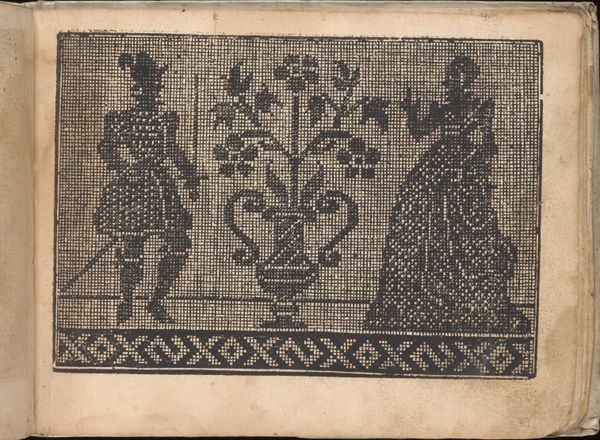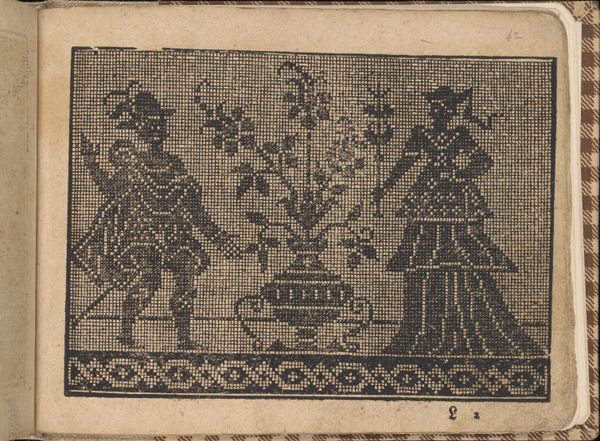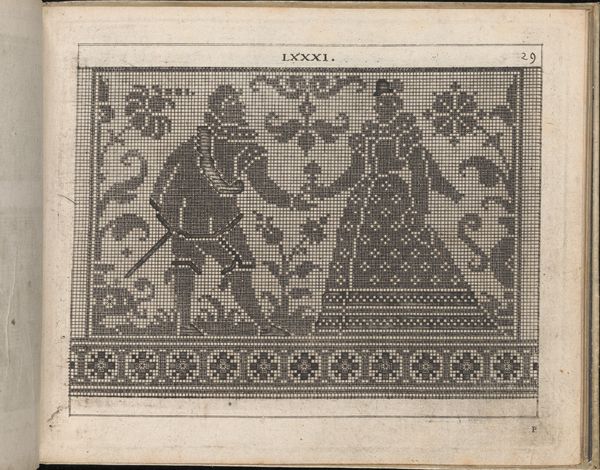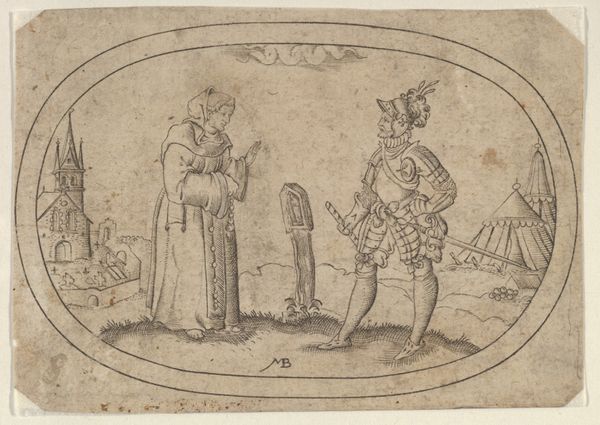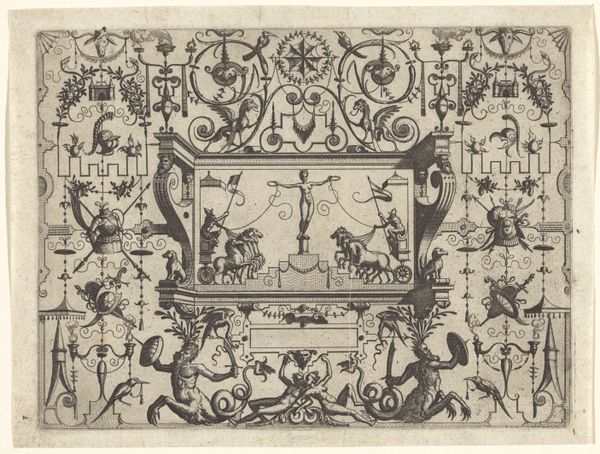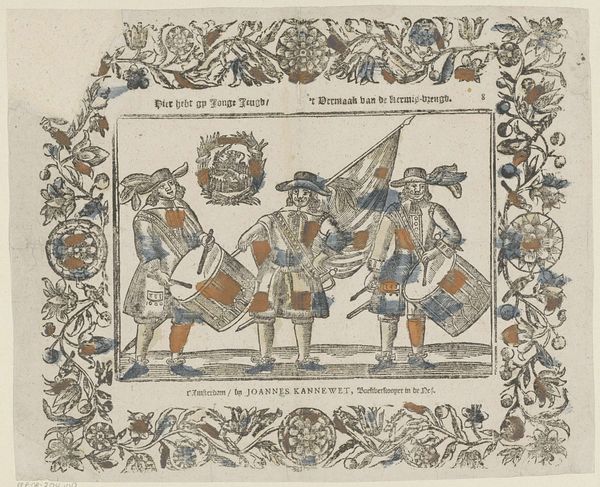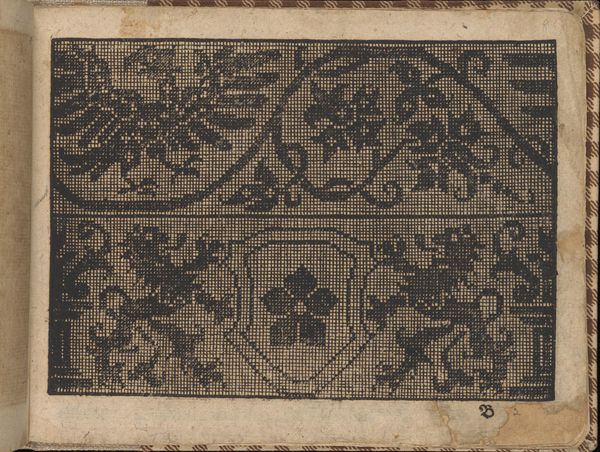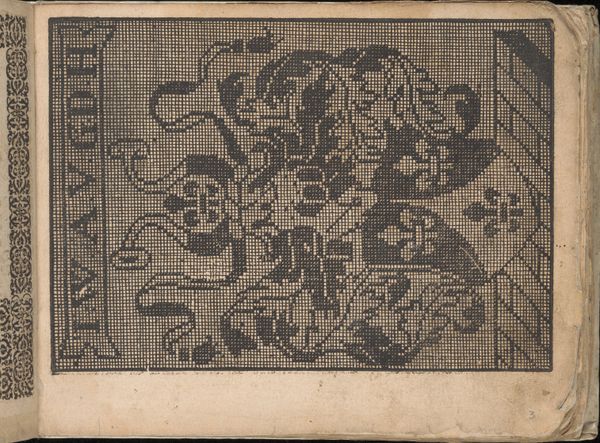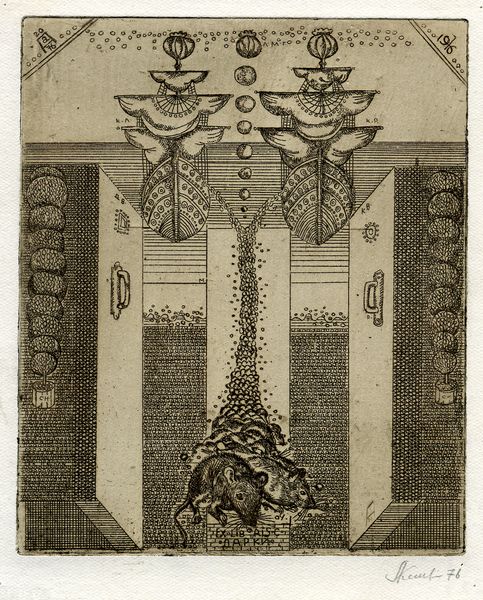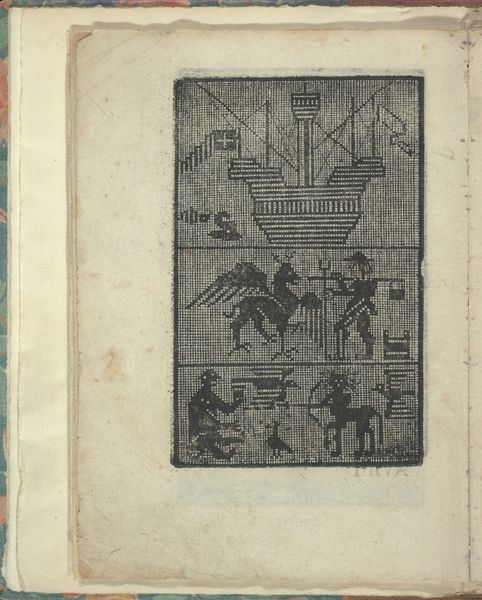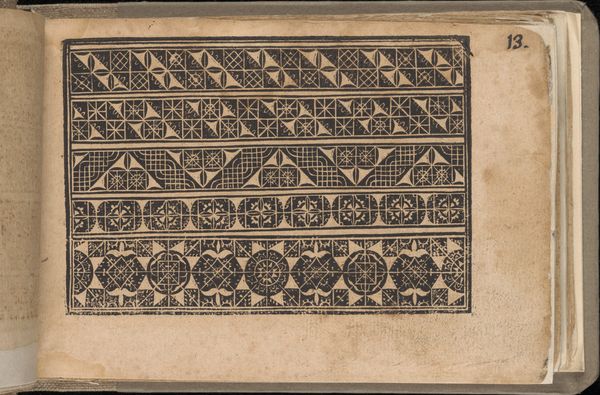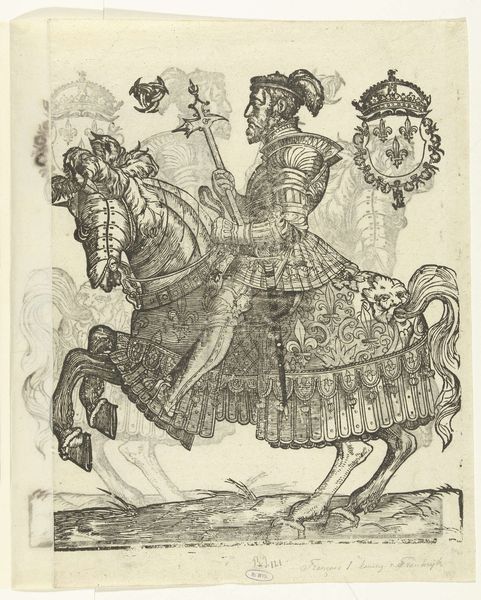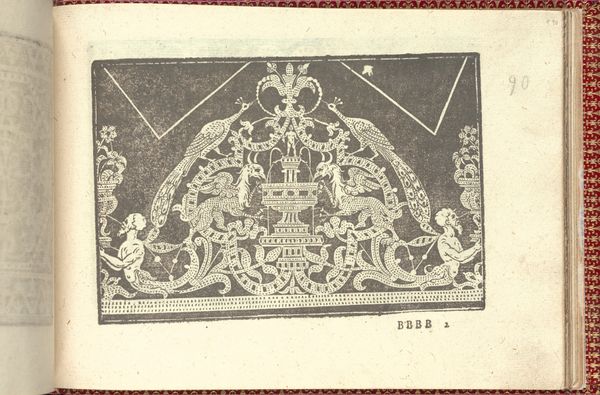
drawing, print, woodcut
#
drawing
# print
#
figuration
#
woodcut
#
line
#
northern-renaissance
Dimensions: Overall: 6 1/8 x 7 7/8 in. (15.5 x 20 cm)
Copyright: Public Domain
Editor: Here we have page 42r from Bernhard Jobin’s *Neu künstlich Modelbuch* made in 1598, a woodcut drawing and print. The cross-stitch style gives it such an interesting, almost digital, quality, even though it’s so old. What do you see in this piece? Curator: It's fascinating how these "model books" functioned in the late 16th century. They weren’t simply aesthetic objects, but practical tools. This particular page, like others in the book, would have circulated amongst artisans and domestic crafters, acting as templates for embroidery and other needlework. Editor: So, it was essentially a pattern book? Curator: Exactly. But think about the implications. The designs, often figural like here with the gentleman, the floral centerpiece and possible veiled woman, were disseminated and reinterpreted across various social strata. The “digital” quality you noticed is due to the woodcut’s linear grid that simplified patterns for easier reproduction, but it also suggests the underlying geometry of social structure. Who had access to these books? What did they choose to recreate and why? Editor: That's interesting! It was a way of spreading and democratizing style. I hadn't thought about that at all. But the woman at the end seems covered with a sheet and I find her existence in this pattern-template unusual. Is it to practice her representation in the household also? Curator: The imagery certainly raises questions. While these books primarily addressed decorative arts, they reflect contemporary attitudes. The "veiled woman" suggests modesty, virtue. She embodies social norms. By including her in the pattern book, Jobin suggests the pervasive influence of such expectations in everyday life and artwork. It asks the consumer if they will incorporate her message or existence in their domestic embroidery practices. Editor: I learned a lot today about how societal impact has many forms. The "digital" style seems less relevant than the social and cultural history lessons this Modelbuch brings! Curator: Agreed. Analyzing art through a historical lens adds layers of richness to how we see both art and society.
Comments
No comments
Be the first to comment and join the conversation on the ultimate creative platform.
